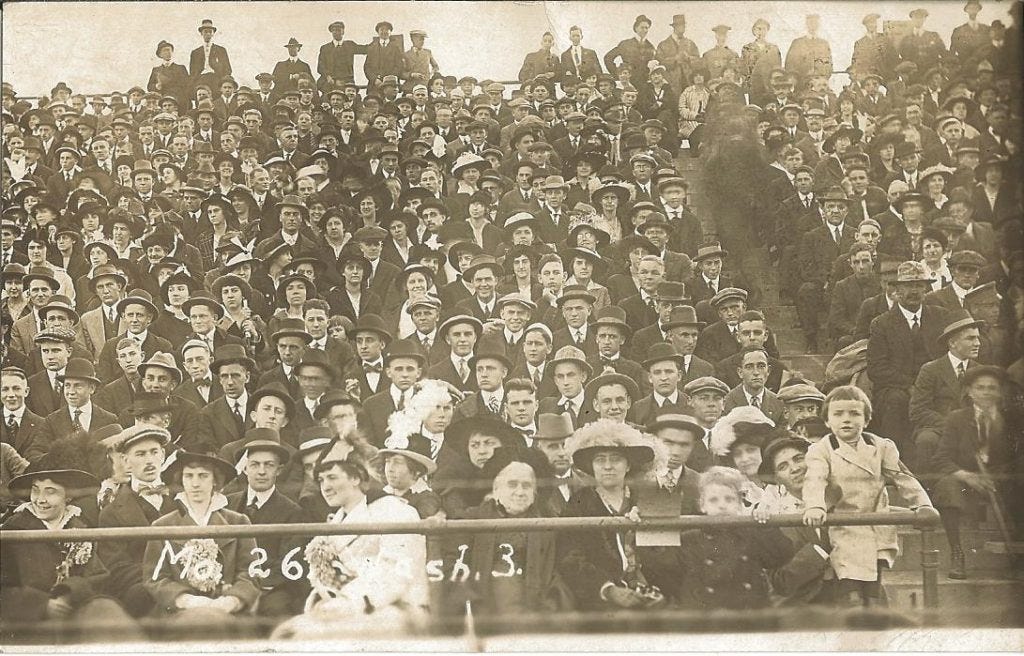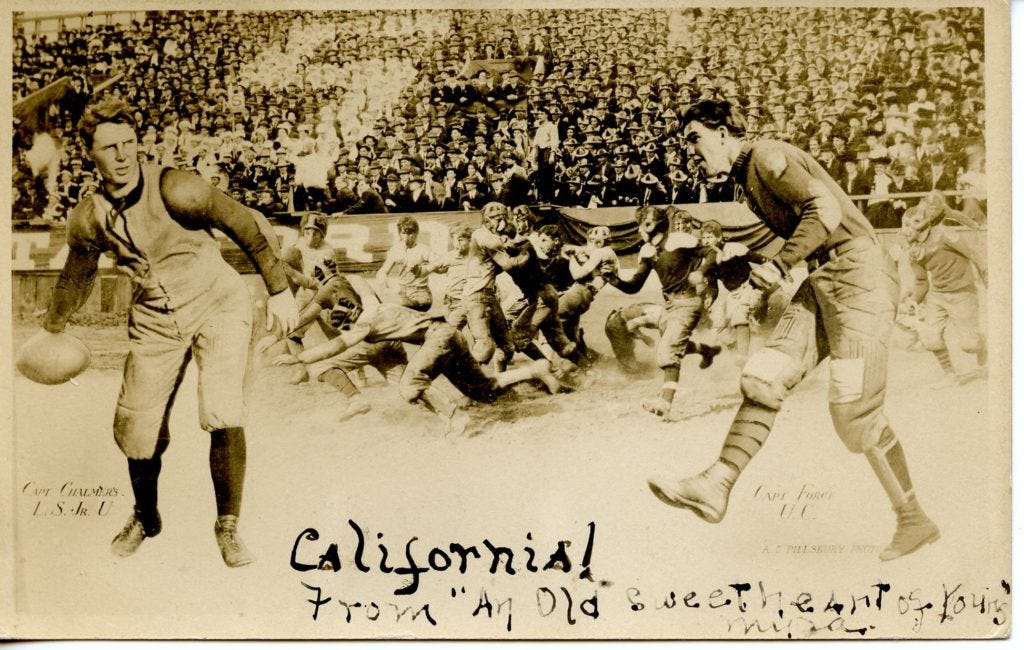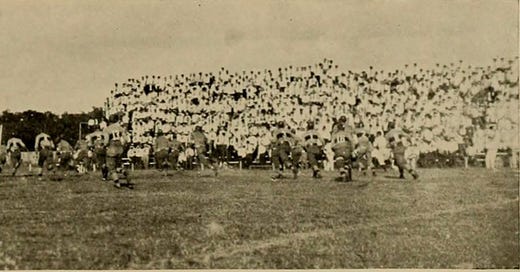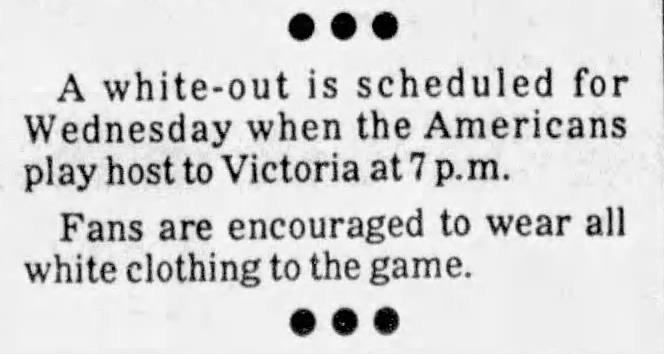Most college football fans acknowledge that Penn State brought whiteouts to college football in 2004 or 2005, though it is clear they adapted the idea from Calgary Flames fans who created the "C of Red" during the 1986 Stanley Cup playoffs. Like others, I was sufficiently convinced of the Penn State origin story that I included it in How Football Became Football, which I published in May. However, new information tells me that whiteouts became a thing at the University of Texas in 1919 and 1920 as college football returned to normalcy following the end of WWI.
Before diving into the Texas whiteouts, let's review the outfits fans typically wore to football games before WWI. As the image below shows, men wore dark suits, ties, and hats, while women wore ankle-length dresses, mostly in dark colors.

While fans generally wore such clothes to the games of the time, there were instances in which groups of fans wore capes or other garments of particular colors to display letters or other patterns in the crowd. A pattern first occurred when a Stanford student distributed white muslin to fellow students who tossed the muslin over their heads and shoulders to form a large "S" in Berkeley's stadium during the 1904 Big Game.

Other schools picked up Stanford's idea, though most switched to using large colored cards for what became known as card stunts.
Before the war, women took a back seat to men in football stadiums, and it was not uncommon for student rooting sections to segregate men and women. That separation resulted in Elizabeth Morrow becoming the first woman cheerleader in America in 1914. She proved so proficient at leading a women's rally that the male cheerleaders invited her onto the field a few days later. By the 1919 and 1920 football seasons, American troops had returned from Europe, and Tennessee became the thirty-sixth state to ratify the 19th Amendment in August 1920, thereby enshrining women's right to vote in the U.S. Constitution.
In any event, newspapers in Texas reported that between 600 and 1,000 coeds dressed in white -with orange ribbons- for the Longhorns' 1919 home game with Baylor. They also organized cheers and performed a snake dance on the field at halftime.

The 1921 yearbook clearly shows whiteouts were in place for the Simmons and Southwestern games (shown below), as well as for the Howard Payne and Austin contests (not shown).


as ended the 1920 season with a Thanksgiving Day game with Texas A&M that brought another level of pageantry. With two undefeated teams meeting before a crowd of 20,000+, the largest in Texas history, fans went all out to display their passion and support. The coeds once again practiced their routines and happily executed them at halftime, despite Texas being down 3-0.

A fourth-quarter touchdown and extra point gave Texas the win and the Southwest Championship, all aided by their fellow students' new-fangled student whiteouts. Yearbook images show that whiteouts continued at Texas for at least several more years. I'll leave it to someone else to determine when they stopped; my intention was only to document that they occurred, and the images shown here clearly demonstrate that to be the case.
Of course, while we now know Texas executed whiteouts eighty years before Penn State, there may have been whiteouts in an earlier time or at another place that has not been identified. With all that said, we can at least acknowledge the kids in State College for reviving a fun and forgotten college football tradition.
Postscript
The earliest reference I've found of “whiteout” used in the context of a team’s fans team wearing all white for a game came when the Tri-City Americans of the Western Hockey League (a major junior league) used “white-out” in the lead-up to their November 21, 1990 game with Victoria.
Football Archaeology is reader-supported. Click here to buy one of my books or otherwise support the site.





This is super interesting. The earliest I can find is when the Winnipeg Jets had an official White Out in 1987 during a playoff game. Sorry Penn State.
Interesting story. I do have one question: did Texas refer to their dressing in white as a "whiteout?" If not, perhaps Penn State invented the expression for fans dressing all in white. It seems that many schools have copied that idea since 2004. Just last week Illinois had an orange-out against Penn State. It did not work.